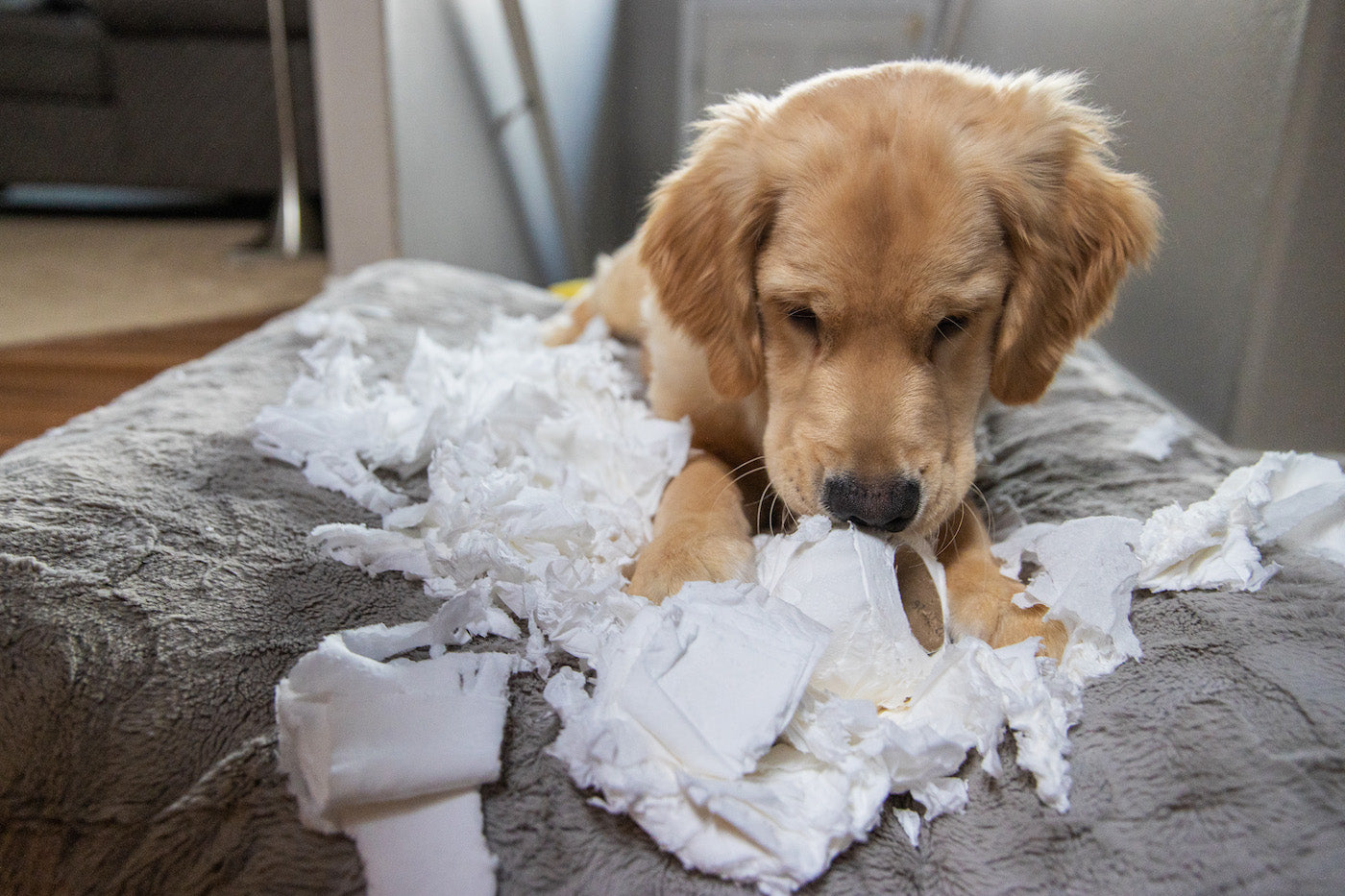AFTERPAY NOW AVAILABLE | CHRISTMAS SALES 30% OFF STORE WIDE - CODE "XMAS30"
AFTERPAY NOW AVAILABLE | CHRISTMAS SALES 30% OFF STORE WIDE - CODE "XMAS30"

They say bringing home a puppy for the first time is quite unforgettable. And indeed, it was—in the form of pee on your favourite carpet. Sigh.
By now, you might have already realised that raising a puppy is not all rainbows and sunshine. They sleep a lot when you want to play, chew your shoes even when you say no, and most of all, they soil on your important things. Unfortunately, it's one of the many reasons why many dogs are returned to shelters.
But you have to understand that these issues can be resolved through sufficient training, and one of the first things you need to teach them is where they can pee and defecate.
Hence, here are 10 practical puppy toilet training tips proven to work.
Puppy locked in a crate?
We know it's uncomfortable to confine puppies in crates, but it's convenient for vet visits, travelling, and potty training. Since dogs are den animals, they'll need an enclosed space where they can rest and feel most secure.
This is beneficial for toilet training since dogs like to keep their spaces clean. Hence, they wouldn't want to spoil in their crates and would send signals to let you know that they have to pee or poo (e.g. scratching, pacing, and whining). Be careful not to miss their cues. Once they start pooping or urinating in their crates, they'll start thinking it's OKAY.
Moreover, choose a crate that's just enough for them to move around comfortably because when you buy something bigger, they might assume it's alright to mess up the other side.
Routines help puppies remember the task they need to accomplish, including urination and defecation. They usually need to do it first thing in the morning or at night, after playing or napping, and after drinking and eating.
With this, it’ll be ideal to train them close to their meal times. It'll help them remember when to eat and make it easy for you to follow up and take them to the potty spot.
Inside or outside?
Although paper training may confuse puppies about whether to poo inside or outside (if outside, make sure you're carrying around a dog poop bag!), it's also necessary when you can't take them outside due to extreme weather conditions or you have to travel.
But you both have to be ready for this before starting the training. You have to consistently supervise their movements, and your puppy must be familiar enough with the paper's texture.
Once they're big enough, they can always go back to doing their business outside.
To stay faithful to your schedule, you could also control their diet.
Since their digestive system isn't fully developed yet, puppies can't manage an excessive amount of food. Thus, breaking their high-quality food into three meals is often suggested to prevent indigestion, diarrhea and other bowel and stomach ailments. Without these complications, their urinating and defecating routines become more predictable.
Consistency is key!
For a puppy to remember your commands, they have to repeat them again and again. For that to happen, you have to designate a convenient spot for them to do their thing. It can be a free space in your yard or a pad placed on your toilet. Puppies will eventually sniff their way back to these spots.
I wanna pee!
Unfortunately, dogs can't tell you these words every time they need to go. But they often do unusual things to indicate their intention. These include sniffing corners, whining, scratching, and pacing back and forth.
Be sure to notice these cues, so you can open the door or lay down training pads for them.
Take time to observe their eating and drinking habit. If they're fast eaters and heavy drinkers, then you’ll have to take them out more often to avoid soiling incidents at home.
Puppies have very small bladders and must pee every one or two hours. To gauge their limit better and avoid accidents, take them outside often and see how long they can hold it in.
It’s difficult to learn and stay motivated when you know that a spank or a shout is waiting for every mistake you make. Dogs resonate with this, too, based on a study by Vieira de Castro et al. (2020).
Results showed that dogs trained under negative reinforcement displayed more stress-related behaviours and higher cortisol levels than those with rewards-based training.
Additionally, the carpet cleaners at Fantastic note that if you happen to find your rug stained, very few things won't go out with either drym chem treatment or hot water extraction.
You like being appreciated for your work, right?
This applies to puppies too. Positive reinforcement or stress-free training boosts our furbabies' confidence and encourages them to repeat the task. This can be in the form of praises or rewards like treats, toys, and new dog accessories–bows, harnesses, and bandanas!
Caring for a puppy takes a lot of dedication and patience. And to think, potty training is just one of the basic things you need to do with them. But it doesn't have to be a stressful experience.
Follow the steps above, try to have fun, and you're sure to get your puppy ready for the world–or the toilet!